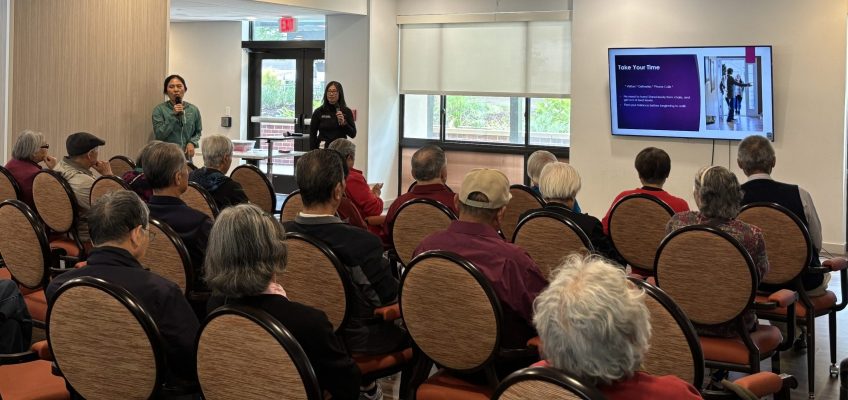Ms. Wyleng Liew, life safety education specialist Fairfax County Fire and Rescue County Fire and Rescue Department, and her colleagues have been community partners with Hunters Woods Fellowship House for many years, supporting our residents age safely in place through education.
In September, Ms. Liew presented a program to our residents that is so critical to the qualitative life of our seniors– fall prevention. To continue her work of supporting Fellowship Square’s mission and enhancing residents’ well-being, we share some highlights of her important program.
Q: Why is fall prevention particularly critical for older particularly critical for older adults living in community settings?
Falls are the leading cause of fatal and non-fatal injuries among adults aged 65 and older in the U.S. in this age group are common, costly, and preventable.
In Calendar Year 2024, Fairfax County Fire and Rescue Department (FCFRD) responded to 127,951 incidents. Of these, 14,685—or approximately 11%—were classified as fall/lift assists. The majority of
these calls involved individuals aged 60 and older, underscoring a clear and growing need for strategic fall prevention and intervention efforts in this age group.
Proactive fall prevention is critical for reducing injuries, preserving independence, and managing emergency service demand.
Q: What are the most common risk factors that contribute to falls, and how can residents and caregivers identify them early?
- Health-related factors Muscle weakness (especially in the legs)
- Balance and gait problems
- Vision impairment (poor depth perception, cataracts, glaucoma)
- Chronic conditions (arthritis, diabetes, Parkinson’s, stroke, heart disease)
- Medication side effects (sedatives, antidepressants, blood pressure meds)
- Cognitive impairment (dementia, delirium)
- Environmental factors
- Poor lighting
- Clutter or obstacles in walkways
- Loose rugs or cords
- Slippery floors (bathrooms, kitchens, outdoor walkways)
- Lack of grab bars or handrails
- Behavioral / Lifestyle factors
- Sedentary lifestyle (low physical activity, deconditioning)
- Improper footwear (slippers, heels, shoes without support)
- Rushing or multitasking (especially when using stairs or uneven
- surfaces)
- Alcohol use
Q: What practical steps can residents take in their homes to reduce their risk of falling? risk of falling?
- Improve safety inside the home:
- Keep walkways clear of clutter, cords, and loose rugs.
- Ensure good lighting in hallways, stairways, and entrances — use
- nightlights in bedrooms and bathrooms.
- Install grab bars in bathrooms (near toilets and tubs/showers).
- Add handrails on both sides of stairways.
- Use non-slip mats in the kitchen and bathroom.
- Maintain mobility and strength:
- Stay physically active with exercises that improve balance, strength, and flexibility (like walking, tai chi, or light strength training).
- Wear supportive, non-slip footwear instead of socks, slippers, or heels.
- Have regular vision and hearing checks.
- Ask a healthcare provider to review medications that may cause dizziness or drowsiness.
- Plan ahead:
- Keep frequently used items within easy reach to avoid climbing or stretching.
- Use assistive devices (cane, walker) if recommended.
- Don’t rush — take your time when standing up or walking, especially if lightheaded.
Q: How important are physical activity and exercises in preventing falls, and can you recommend specific types?
Physical activity is one of the most effective ways to prevent falls. It strengthens muscles, improves balance and coordination, increased flexibility, boosts confidence and supports overall health. Walking, swimming, stretching, strength training (light weightlifting and chair rises), and balance and stability training (tai chi) are effective at reducing falls. Exercise is most beneficial when it is regular (2-3x/week) and continued long term.




